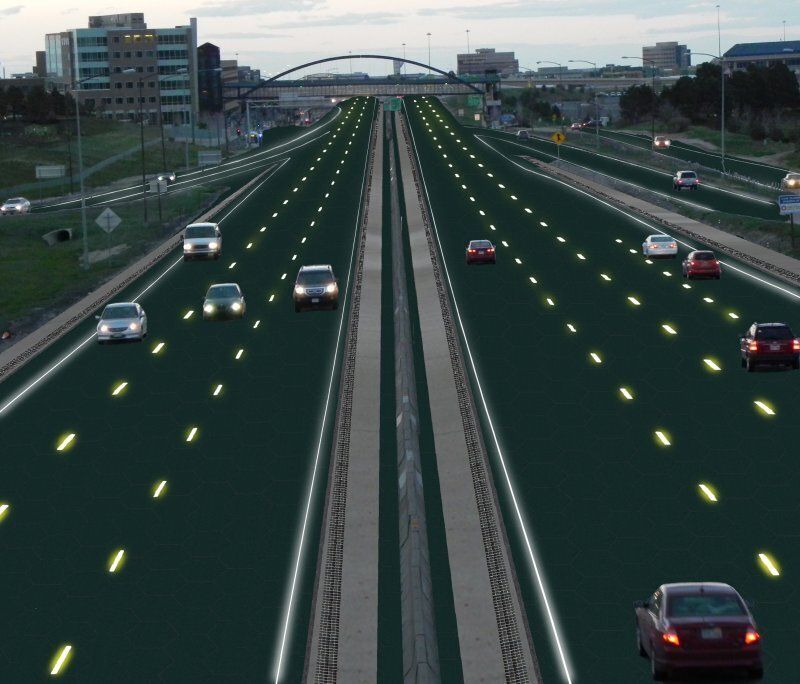Is your Facebook feed suddenly crowded with friends posting about solar roadways?
If so, it’s probably because of people like Shannon Forrest. The mother of two was so moved by an online video explaining the “smart road” technology, she posted messages to 70 Facebook friends to spread the word.
“I can't say that I have been so driven about an invention as I am about this one,” she said from her home in Kitchener, Ont.
“It just makes sense! So I want to do what I can to make others see the simplicity in this and the good that can come of embracing this technology.”
Solar roadways are the brainchild of a husband and wife team from Idaho, who have spent the last decade developing the technology. They launched an Indiegogo crowdfunding campaign on Earth Day, April 22, with the goal of raising $1 million to take their vision from “from prototype to production.” The couple, Scott and Julie Brusaw, want to manufacture interlocking hexagonal panels that could replace asphalt with roads made of solar cells.
The panelled roads could generate massive amounts of renewable energy. By replacing all roads in the U.S. with solar panels, the country would generate three times the energy that it consumes, the claim goes.
Story continues below
“You need to know about this technology, you need to get behind it, you need to share it with everyone you know because this is actually happening,” the voiceover in the video suggests.
The concept has gone viral, and their Indiegogo campaign surpassed its goal by some 160 per cent, two days ahead of the May 31 deadline.
The campaign has been shared a whopping 157,000 times on Facebook, tweeted 15,000 times and even has 4,000 shares on the lighter-traffic Google Plus platform as of Thursday night.
The idea is to replace all roads — starting with private driveways and parking lots — with the solar, heating and LED panels sandwiched between layers of ultra-thick glass.The initial $1 million would go toward hiring a team of engineers to expand the project.
Using grants from the U.S. Federal Highway Administration, the Brusaws have already built a 4-metre-by-11-metre parking lot using the glass-covered panels. They say it can handle 250,000 lbs of weight, and have even uploaded a video of a John Deere tractor driving over it for evidence of its durability.
The company lists many benefits to the road panels — everything from the panels heating up to melt ice and snow on roads to LED displays that can be used as road markings or can warn drivers about moose crossings ahead.
Other promises: It could power electric vehicles! Make driving safer! Pay for itself by collecting energy! End our reliance on fossil fuels! Cut greenhouse gases by 75 per cent!
Those revolutionary ideas have attracted plenty of online enthusiasts, and the video “Solar Freakin’ Roadways” has been viewed nearly eight million times since it was uploaded May 18.
News about the concept has been upvoted on Reddit (the forum’s way of showing approval) tens of thousands of times, and tweeted about 29,000 times in the past month, more than the Toronto Maple Leafs and Vancouver Canucks combined.
The concept has received accolades from influencers including Margaret Atwood and TechCrunch.
Passion for the project is trans-Atlantic. In England, radio presenter Pete Allison tweeted: “I wasn't aware so many of my friends were so passionate about the benefits of solar roadways.”
Allison says he has seen five or six friends post a link to the campaign since last week, when he overheard his partner watching the video.
“I think it's the style of the video that's engaged people,“ he says.
“It makes a comment about how roads may finally make it look like we're living in the future, and the novelty of that may resonate too.”
But can the company deliver on those promises?
Critics in the tech community have been quick to caution that the innovative idea could remain a pipedream.
Extremetech.com said the concept is “verging on utopian.”
“On paper, it really does sound like one of the greatest inventions ever. In reality, though, where, you know, real-world factors come into play, it will probably never make the jump from drawing board to large-scale deployment.”
The site points out that asphalt costs between US$3 and $15 per square foot, whereas the cost per solar panel could amount to about $70 per square foot based on 2010 calculations by the company.
One estimate pegs the total cost to repave every road in the U.S. with panels at $56 trillion, or about four times the country’s national debt. That's according to Aaron Saenz, writing for the site Singularity hub.
But the cost argument isn’t going to stop people like Forrest from spreading the message in your newsfeed. To her, the science makes sense and the roadways are “win-win” because they can eventually pay for themselves.
“How can you not get passionate about something so great?” she asked.
The marketing and account manager has shared the message through texts to professional contacts and plans on changing her work email signature to include a message. She pledges to speak to everyone she knows about the technology she believes could improve the world for her children and theirs.
